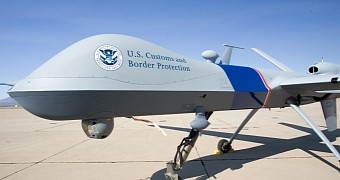The US Department of Homeland Security (DHS) and the US Customs and Border Protection (CBP) agency are reporting on incidents where drug traffickers have hacked unmanned air vehicles (UAVs, drones) in order to illegally and secretly cross the US-Mexican border.
UAVs have become a common presence in the US military, but they have also spread to other US law enforcement agencies like local police and border patrol.
Unlike their military counterparts, which cost millions of dollars, the drones used by other law enforcement agencies are much smaller, due to the smaller budgets allocated to the acquisition of such vehicles.
CBP drones are vulnerable to GPS spoofing attacks
Because of this, various standard drone modules had to be removed. One of them is a module that ensures the drone's security against a certain type of attack: GPS spoofing.
GPS spoofing is a trivial cyber-attack, which relies on sending GPS receivers fake GPS data.
Each UAV has a GPS receiver, used to receive data from off-orbit satellites and navigate along the border, watching for illegal crossers.
Drug traffickers have quickly figured this out, and using GPS spoofing techniques are sending UAVs wrong coordinates, made to look like coming from an authentic source.
The drone, receiving wrong coordinates, corrects course and leaves its normal patrol area, going to the section it thinks it should be at, based on the wrong coordinates.
Once the drone leaves the area of the GPS jammer&spoofing device, it then tries to correct again, going back to its proper patrol area. It follows this back and forwards process until it remains out of fuel and returns to base, or the traffickers safely crossed the border and turn off their jammers.
High cost of anti-spoofing equipment leaves drones exposed
The only way to prevent such scenarios from happening is by using anti-GPS-spoofing hardware within the drone's makeup.
As Michael Buscher, CEO of Vanguard Defense Industries told Defense One reporters, this is a very costly module, and also very bulky. Adding such equipment to a drone is not only very expensive but also affects the drone's flight time, something which both the DHS and CBP are not willing to accept.
Right now, the only way to plug these security holes is for the DHS to wait for technology to advance and cut down on its manufacturing prices. To accelerate this process, the DHS also started funding a series of research programs.

 14 DAY TRIAL //
14 DAY TRIAL //